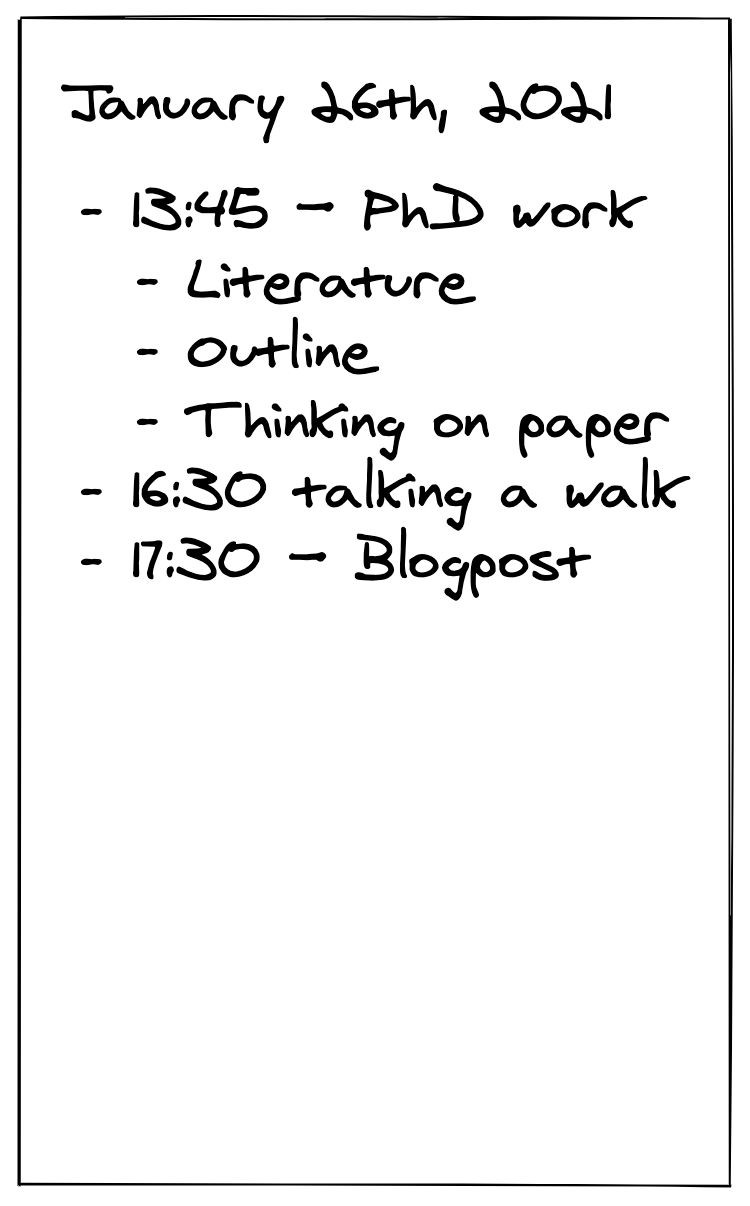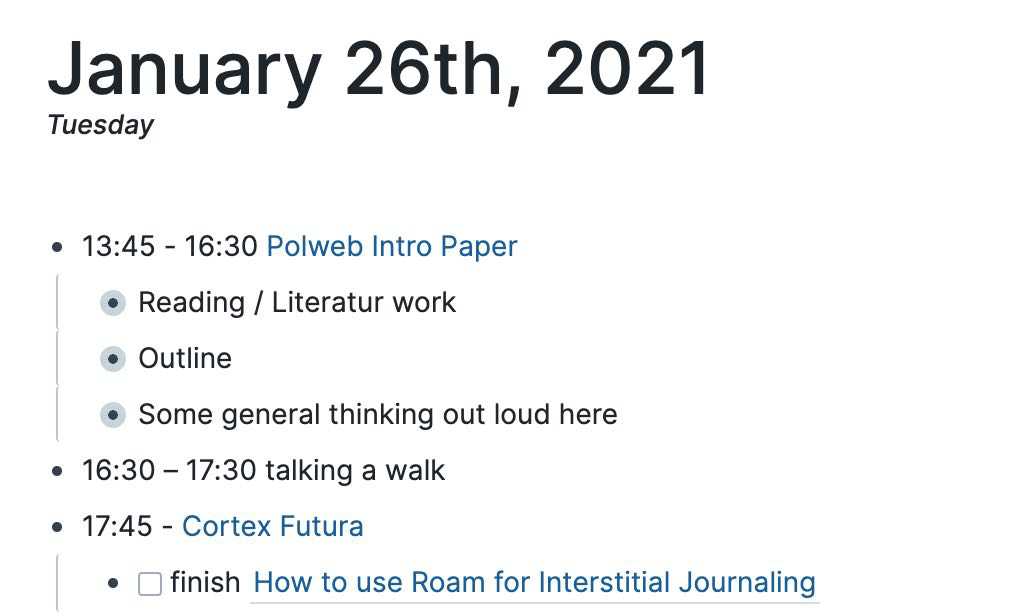Interstitial Journaling
How to use Roam Research for Interstitial Journaling
Interstitial Journaling is a great technique for minimizing context switching costs and staying productive. Here's how I use it in Roam Reserch.

Simultaneous invention is a term that describes when the same thing is invented by multiple people basically at the same time. One example is when Louis Ducos du Hauron and Charles Cros presented their independent work on color photography on the same day in 1869. And while the term "Interstitial Journaling" is attributed to Tony Stubblebine, similar ideas and approaches have been floating about the Internet for a while. Work Cycles as the folks at Ultraworking teach them are basically the same thing and a bit older, and people like Brett Terpstra have also written about adjacent workflows for a while.
The cool thing is, no matter where you get it from, the concept remains powerful yet incredibly easy to implement at the same time. So simple in fact that you can do it with a simple piece of paper and a pen, or using your favorite note-taking tool like Roam Research or Obsidian or Logseq or whatever. Doesn't matter – works anywhere.
All you have to do is write down the time you start a thing and what you're doing, like this:

Why is interstitial journaling useful?
First, it is a very simple way to "fall into focus", because it's an easy on-ramp for thinking about the next steps for whatever you're going to work on.
Second, it makes taking breaks a much less "dangerous" activity, because you'll always know what you were working on when you return. Often the context switching costs of a break can be quite high, but if you took notes of what you were working on it's easier to return. Fear is not the mind killer, context switching is.
Third, it gives you rough time-tracking for free! If you write quick notes for when you start and stop with an activity, all you have to do is look over it later to get a rough idea for where your time went. Especially when you're working on "long and slow" projects like academic papers, where the points of positive feedback on progress as often far and few between, having a log of your work that you can look at can help in fighting the feeling of dread that might crop up otherwise.
Interstitial Journaling in Roam
One of the great things about Roam Research is that it gives you a perfect place for doing interstitial journaling: every time you open up Roam, it starts on the daily page for that day. Start writing – done. You see that in the screenshot at the top. Roam also has handy shortcuts to add the current time as a timestamp, which makes it even easier to enter when you're starting or stopping a given task. Simply type /tim and you can select Current Time from the dropdown.
An additional benefit you get for basically free is that it's very easy to collect "lessons learned" while you're taking notes. For the data analysis work of my PhD, for example, I've created a simple tag til for "Today I Learned" under which I collect little insights on programming operations. If you combine this with spaced repetition, you can learn new skills really fast.

Doing interstitial journaling is also a fantastic way to simply "think on paper" and have that handy as a reference. When I write in Roam, I usually add the start time of when I work on a paper or this blogpost, for example, plus tag the "area" of what I'm working on, and then indent to my heart's content. And then whenever I need to refresh my memory on what I was doing last for a project, I go to the project's page and have all my notes right there.
That's all there is to it. Nothing to install, nothing fancy at all – just a solid way to stay focused during the day, minimize the impact of contact switching, have a simple log of where your time went and reap the benefits of gathering small insights as a byproduct of your "thinking on paper".
Related Topics
Join the Cortex Futura Newsletter
Subscribe below to receive free weekly emails with my best new content, or follow me on Twitter or YouTube.
Join and receive my best ideas on academic workflows, note-taking, and Roam Research
